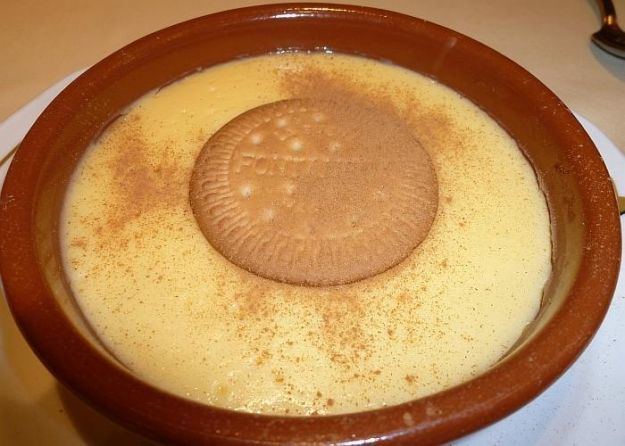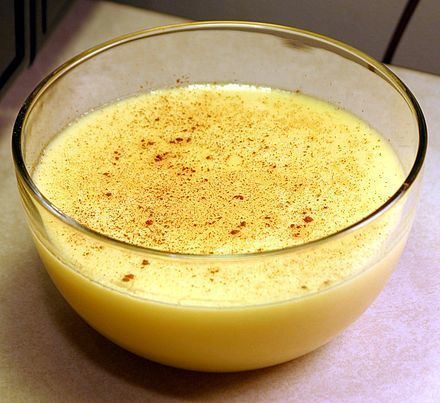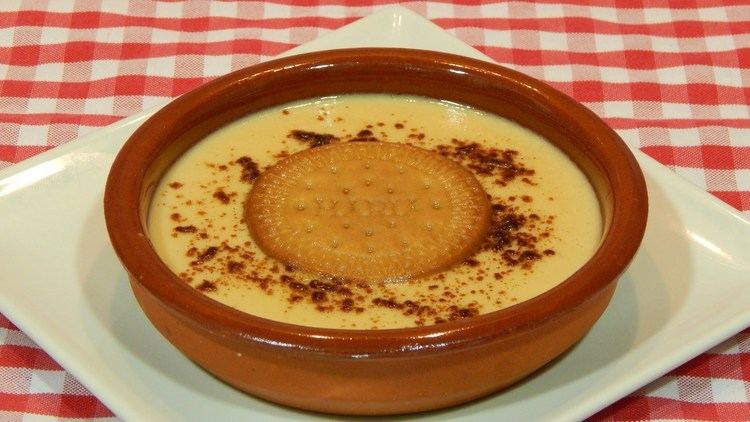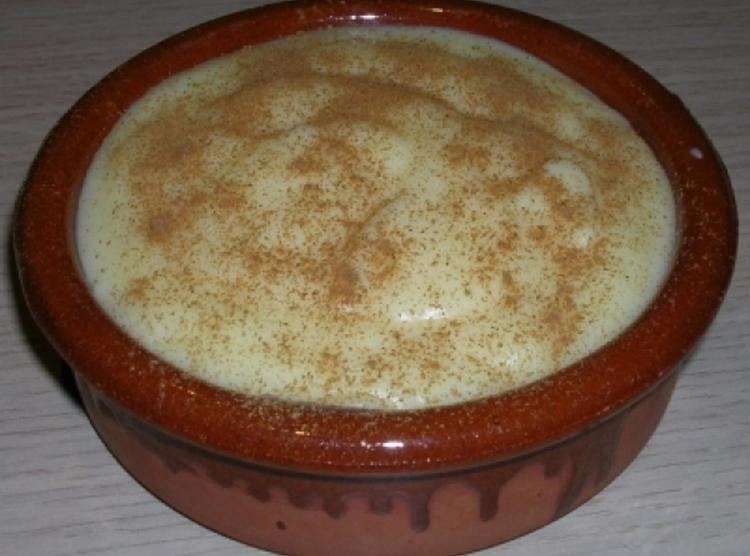 | ||
Similar Buñuelo, Crème caramel, Custard, Cuajada, Turrón | ||
Classic spanish custard natillas easy spanish dessert recipe
Natillas ([naˈtiʎas]) is a term in Spanish for a variety of custards and similar delicacies in the Spanish-speaking world. In Spain, this term refers to a custard dish made with milk and eggs, similar to other European creams as crème anglaise. In Colombia, the delicacy does not include eggs, and is called natilla.
Contents
- Classic spanish custard natillas easy spanish dessert recipe
- Etymology
- Spain
- New Mexico
- Colombia
- Peru
- Mexico
- Costa Rica
- Cuba and Puerto Rico
- References

Etymology

Natillas is a diminutive of nata ("cream", in English), that is, crema de leche (milk cream), referring to the consistency of the dish.
Spain

In Spain, natillas is a custard dish typically made with milk, sugar, vanilla, eggs, and cinnamon. The dish is prepared by gently boiling the milk and slowly stirring in the eggs (often just the yolks) and other ingredients to create a sweet custard. The differences between Spanish natillas, English custard or French crème anglaise are vague, mainly related to their thickness.

This custard (though is a pouring thin cream and not a coagulated custard) is also similar to flan but is typically richer, makes generous use of cinnamon flavoring, and does not use caramel as flan normally does.
New Mexico

New Mexican natillas are derived directly from the recipes of Spain as a result of the Spanish Conquest and the existing Spanish descendents. Such natillas are custard-like in consistency and may, in some recipes, have flour in addition to egg whites. They are not to be confused with Mexican natillas.
Colombia
In Colombia, natilla is the most popular Christmas dish and is eaten along with buñuelos and manjar blanco, and it resembles a flan or pudding. Some of the ingredients include milk, panela (blocks of brown sugar), cinnamon sticks, and flour or cornstarch. Occasionally people like to add grated coconut or raisins but these are optional ingredients. To garnish it, powdered cinnamon is spread on top of the finished natilla. Natilla is found all throughout the Christmas season and usually stores sell pre-made natilla; but one of the best known Christmas traditions in Colombia is making natilla in an improvised campfire in the streets or home patios.
Peru
This term is used in Peru, especially the city of Piura, to refer to dulce de leche, a spread made of milk and sugar that is boiled until it is thick and the sugar has caramelized to a rich brown color. The Peruvian confection manjar blanco is arguably more similar to Spanish natilla except that it is somewhat thicker and has no eggs (and manjar blanco in Spain refers to yet another dish).
Mexico
In Mexico, Natillas are also found and resemble a thicker version of the dessert drink called "Atole."
Costa Rica
In Costa Rica, the term is used for a sour cream-like dairy product used as a condiment with a variety of dishes. The product is homogenized and pasteurized milk with a lower fat content (about 12%) than normal sour cream, some brands add salt to the cream.
Cuba and Puerto Rico
Natilla in Cuba and Puerto Rico is classified as a cold custard dessert. Natilla is made with cornstarch, vanilla, sugar, eggs, lemon zest, cinnamon, milk, and evaporated milk. Typically served on Christmas in small cups with cinnamon sprinkled on top. In Puerto Rico Natilla can be brought all year around in supermarkets and convenient stores as a prepackaged powder with just the requirement of heating with milk. A less sweeter made with honey and more milk version in Puerto Rico is served for breakfast, once done its topped with fruit and cinnamon.
